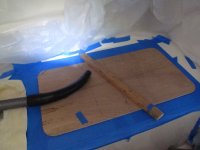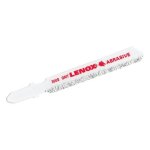Out of those three choices, I'd use the jigsaw and set up a guide to make as straight a line as possible (a clamped board, say). It still won't be perfectly straight (OTOH, maybe that doesn't matter if you are putting a pre-fab hatch in). I find that the "grit" blades (sold for cutting tile, looks like a bunch of sand glued to blade) work fantastically on fiberglass and don't dull. I lay blue tape over the surface first, then strike a line right on the tape and cut through that. Of course check to see what blade might hit underneath.
If you have an oscillating tool (MultiMaster, etc.), that makes even less dust.
But, don't underestimate the dust factor! I do a few things, depending on what I have on hand.
1) Always wear good respirator.
2) If no power or vacuum, lay wet paper towels all around - the dust will somewhat land on them and "stick," then you can throw them away. If you do have a vacuum, set up the nozzle right at the tool area (I tape it in place) and if possible, have the vacuum outdoors (so the exhaust won't spread dust).
3) If in a finished space, I sometimes make a clear plastic "room" and work in that - sometimes it's just the size to put my hands and tool in; other times big enough for me to get into.
4) Goggles, Tyvek suit, and disposable gloves taped to wrists of suit (fibergass dust makes me itch).
Everyone is different, but I'd rather spend an hour prepping than a half hour (or a half year...!) cleaning up fiberglass dust.
Here is a photo from when I was getting ready to cut out for V-berth hatches. Gives the general idea. I used a jigsaw with the "grit" blade. The long "stick" was to keep the piece from falling into the hole (I rotated it as I went), and the plywood was my cutting guide. In this case I ran the saw foot up on the plywood, and just the blade to the outside of it. For a shorter/straight cut, I'd probably use something more like a 1 x 2 and run the saw foot on the fiberglass. The way I did it the blade can flex slightly, but it worked for that situation.

This is what I mean by the "grit" blade:






